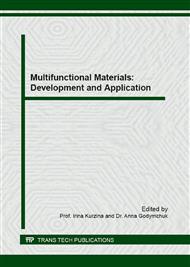p.113
p.118
p.125
p.131
p.136
p.142
p.150
p.156
p.162
Influence of the Dislocation Density on the Expansion Dynamics of the Crystallographic Slip Zone along Screw Orientations in Aluminum and Copper
Abstract:
Crystallographic slip is one of key mechanisms determining plastic form change of crystalline solids. Despite a large amount of works done on the subject, crystallographic slip is a very difficult subject to study. Significant progress in the study of the crystallographic slip process is possible only with the use of a set of different methods: experimental methods, methods of mathematical modeling and simulation. The paper presents a modification mathematical expansion model of closed dislocations emitted by one dislocation source with takes into account the elastic interaction force among all dislocations of the forming dislocation pile-up. The model takes into account the Peach-Koehler forces, lattice, impurity, and dislocation friction, linear tension, viscous deceleration, and the intensity of generation of point defects beyond jogs on the dislocation, as well as the elastic interaction force among all dislocations of the forming dislocation pile-up. The analysis of the study results on the expansion dynamics of the dislocation loop along the screw orientation on copper and aluminum with varying of the dislocation density from 3×1011 m−2 to 1012 m−2 is carried out. It is established that the length and the path time of the screw dislocation, as well as the number of dislocations emitted by the dislocation source, essentially depend on the density of dislocations. The dependence of the current radius, velocity, and kinetic energy of the screw dislocation on the path time and the dependence of the current velocity and the kinetic energy of the first screw dislocation emitted by the dislocation source on its current radius are described.
Info:
Periodical:
Pages:
136-141
Citation:
Online since:
February 2016
Price:
Сopyright:
© 2016 Trans Tech Publications Ltd. All Rights Reserved
Share:
Citation:


